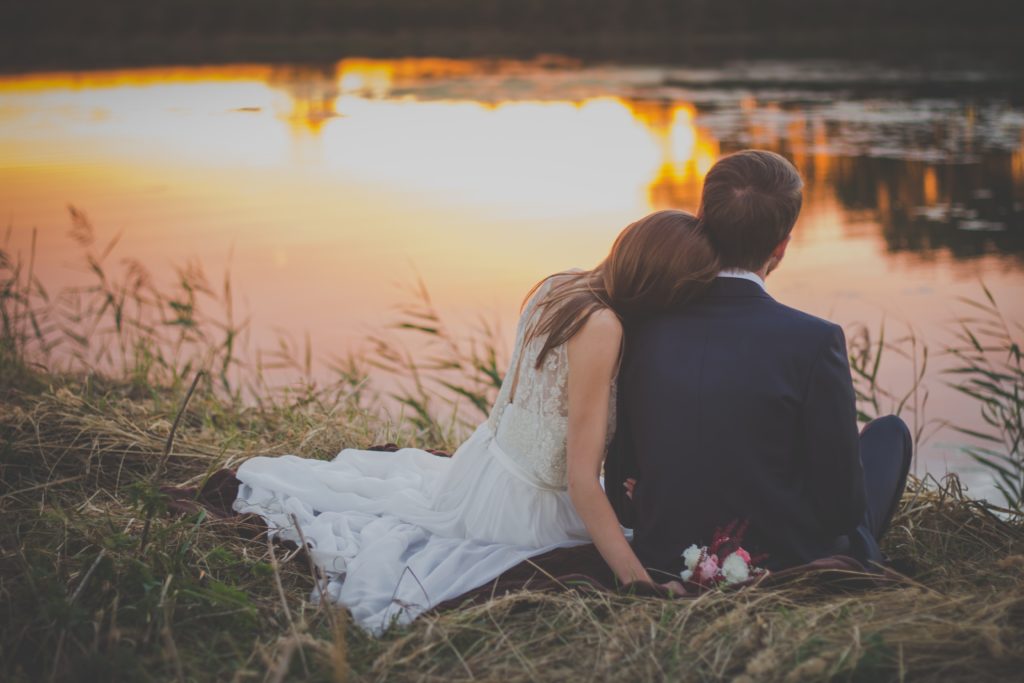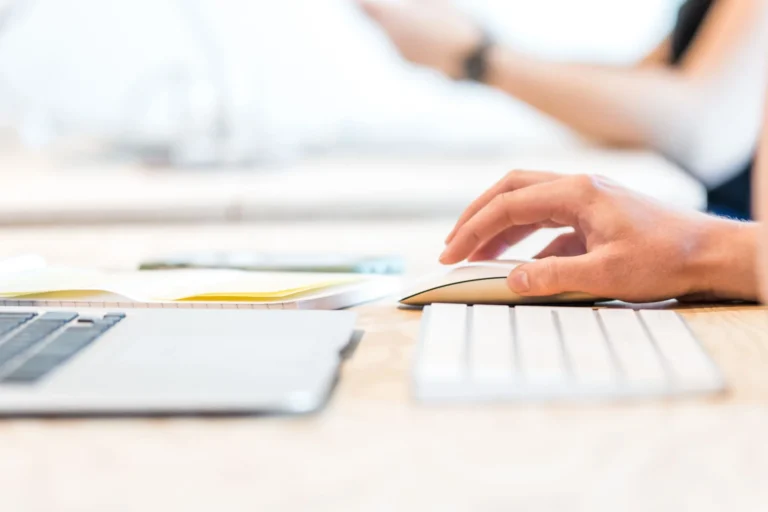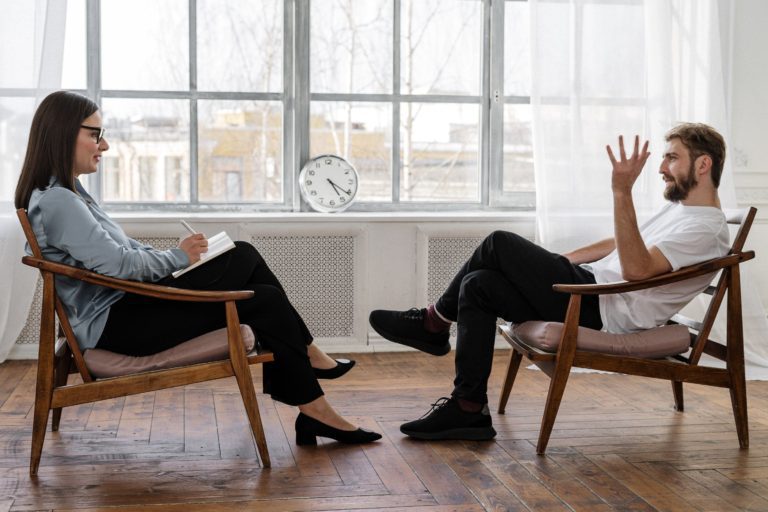Content Warning: The introduction of this post contains a description of trauma, anxiety, depression, PTSD, and *past* urges to unalive myself. If this may be triggering for you, please feel free to skip this post or jump to the first section of my post where I share strategies for rediscovering yourself after trauma.
When you’ve lived through repeated medical emergencies and chronic illnesses, the trauma literally restructures your brain, driving the action of every cell in your body.
You can’t even imagine yourself next week, much less next year or in 25 years. The only way you’re making it is to survive one second at a time, because you can’t escape your reality and you’re desperately trying to resist the voice in your head that’s whispering the only way out is to end your life.
Stuck in survival mode, you can’t allow yourself to make plans, because who knows whether you’ll be thrown back into another wave of hell at a moment’s notice and your fragile world will come crashing down once again. Everything must be done one day at a time.
Trying to think about your future is terrifying at best, but most of the time just impossible. You’ve been living in a vacuum – imprisoned, tortured – for so long you can’t imagine being outside of it. Most of all, though, you can’t imagine living much longer in it.
The past makes you ache unbearably, because it feels like a hazy dream and you know your life will never return to the way it was before.
I can describe this so vividly because it was how I lived (well, survived) during the past 3-4 years. Anytime I experienced any physical healing or recovery progress, it was short-lived. Then another wave of medical emergencies began again.
If you’d like, you can read more about my health journey.
Over the past year, I have gradually realized emotional healing doesn’t happen by itself when you’ve lived through so much trauma (medical or otherwise). Even when your circumstances begin to stabilize.
If you don’t even feel like a person anymore after everything you have been through, this post is for you. I have been there, friend.
When you don’t know who you are, how to live, how to think about your future, or anything else – that’s when it’s time for rediscovering yourself after trauma.
These strategies have made a marked difference for me, and I hope they may for you as well.
This is a longer post, so use this menu to skip to a particular section, if you would like.
- Healing Through Therapy
- Re-engaging With Life
- Healing My Self-Image
- Reevaluating My Future and Learning to Hope Again

Healing Through Therapy
I delayed seeking out therapy for a long time because of the cost barrier.
But, in early 2022, I knew I had to find a way to see a licensed therapist no matter what. My mental health hit an all-time low when we caught COVID a second time.
There are no words to describe how it feels living through a month long PTSD episode where you can’t tell the difference from what you’re currently experiencing and what happened in the past, and whenever you can comprehend the present, the terror of ever again going through what you did before completely paralyzes you.
If you’re struggling to afford therapy, I have two resources that might help.
- During open enrollment in November-December 2021, we applied for an income-based Premium Tax Credit. This enabled us to get a joint health insurance plan for $95 per month that normally would have cost almost $800 per month. Our new plan covered outpatient mental health services (ie. therapy) for $30 per visit.
The only caveat is, if you make more at the end of the year than you estimated, you may owe some money to the IRS. If your income might fluctuate higher than you expect, I recommend only using part of your Premium Tax Credit per month instead of all of it. - If your health insurance plan does not cover therapy or health insurance is unaccessible, I can recommend a wonderful nonprofit instead – OpenPath. The way OpenPath works is you pay $65 for a lifetime membership, and then you have access to any of the therapists who contract with them. Therapists who offer their services through OpenPath only charge $40-70 per session.
You can search for therapists in their directory and contact any you’re interested in until you find one that works for you. Once you settle on a therapist, let OpenPath know and send your membership number to your therapist. That’s it – super easy! There weren’t any male therapists in our insurance network, so Jonathan (my husband) found his therapist through OpenPath.
I found my therapist through our insurance network, and she has been so helpful.
Talk therapy only goes so far in dealing with trauma, so that hasn’t been our main focus. For working through completely past medical trauma, my therapist and I did several EMDR sessions. If you aren’t familiar, EMDR is a method of helping people with trauma and PTSD reprocess traumatizing memories. The goal is to release a lot of the fear and pain connected to those memories through the EMDR process.
You can do EMDR with rapid eye movements, or with tapping. I chose tapping, since rapid eye movements can cause POTS flare ups.
My EMDR sessions were wildly effective. After my first session, I honestly felt like I’d taken a sedative drug, but without any of the negative side effects. Now when I think back on the memories I reprocessed, I feel a faded sadness and sense of loss, but also kindness and compassion for myself. This is in stark contrast to before EMDR, when the flashbacks would cause severe terror and an onslaught of debilitating psychosomatic symptoms.
For working through trauma that’s interconnected with ongoing symptoms and health problems, my therapist taught me somatic therapy. My trauma had deeply affected my physical body, so somatic therapy helped me override my thoughts and learn how to make my body feel safe once again. Of course, this is a continual process and not a one and done deal. I practice somatic therapy on myself on a near daily basis.
A few of my favorite somatic therapy exercises include:
- Visualization (imagining myself in a real or imaginary place where I’m perfectly at peace)
- Deep breathing/progressive relaxation (this version was most effective for me)
- Vagal toning (this exercise specifically)
- Physical touch, such as hugging myself, tapping, or getting a gentle massage
- Holding a comforting stuffed animal such as a Squishmallow (yes, I’m serious)
- Listening to calming music, nature sounds, and delta waves
I am a Christian, so another huge aspect in my emotional healing was learning to spend time with God once again. Engaging in regular prayer, worship, and reading scripture helped me reconnect and build a rock solid foundation that made it harder for my circumstances to shatter me so completely.

Re-engaging With Life
After being stuck in long cycles of severe illness so many times, I developed a survival mechanism of never making plans to do anything outside of the bare minimum to stay alive (like work, making food, etc.)
This was based on reality for some time, because I was legitimately too sick to do anything. There was one ten-month and another five-month period where I was even too sick to work or get out of bed most of the day.
The problem is, once I started having recurring days and even weeks where my symptoms were milder and I could function better, I didn’t automatically stop this survival tactic.
For fear of everything being ruined if I got sick or badly flared up, I wouldn’t commit to anything people invited me to do. Attending a get-together, going to church, singing on my church’s worship team, going on a planned date with my husband, or visiting with friends were things of the past.
I operated on a day-by-day basis, spontaneously. If it turned out I had the energy and strength to do something fun *that* day, then I might. Nothing else.
I made HUGE progress with my emotional and mental healing when I challenged this mindset.
Instead of revolving my life around what I felt was the likelihood of being extremely ill, I started planning my days and weeks as if I would be functioning, at least somewhat so.
On days and weeks when my health is better and symptoms are mild, this has helped me build a full and meaningful life.
When it turns out I have a POTS or autoimmune flare up on a day or weekend when I have plans, instead of automatically giving up on everything, I take the time to evaluate where I am at physically. Sure, it could be possible I’m too sick to do anything more than the bare essentials. But it could also be possible I’m able to do what I have planned – and enjoy it – only perhaps with some accommodations.
This doesn’t have to be limited to outside plans, either. When I find myself with a little bit of time, and I have the energy, I try engaging in an activity I enjoyed prior to health problems. For me, this could be painting, playing my harp, writing, or spending time outside.
Another way I’m re-engaging with life is to soak in the better days and weeks, really engage in them with my five senses.
I take time to notice, how does it feel to live through a day where I slept decently and have sustainable energy, a calm nervous system, a normal heart rate, and little pain?
What does it feel like to bask in the sun, feel the fresh air on my skin, smell the blooming flowers of spring, and hear the birds chirping in the distance?
What’s it like being able to breathe deeply and recognize I’m enjoying myself at a family get-together or event?
How does it feel to truly, deeply laugh and experience joy?
When I engage in these moments with my five senses, it creates memory snapshots and new, healing pathways in my brain.
Now, when I have a particularly brutal flare up or viral sickness, I don’t instantly feel desperation and hysterical fear. I notice myself having healthier thoughts without forcing them. Thoughts like, “I’m really struggling right now, but I will be gentle with myself and it’s okay, because I will have a better day/week again soon.”

Healing My Self-Image
Medical emergencies and chronic illnesses do a number on your physical body. Whether you’ve gained or lost weight, lost muscle mass, are dealing with extreme bloating, or anything else.
You’re probably not thinking about your appearance in the middle of a crisis. But, as a catastrophic period of time gradually returns to something closer to normal, that’s when it hits.
If you’ve found yourself wondering, “What happened to my body?” – you’re definitely not alone.
My body is not the same as the one I had 4-5 years ago, and the sizes and clothing that worked for me back then no longer do.
At first, this led to extreme hatred of my body and a desperation to get back to the way I was before, no matter what it took.
You probably aren’t surprised, but nothing I tried worked, even though I tried a lot over a couple of years. The changes were there to stay, and that was that.
Another way trauma and chronic illness affect you physically is via dissociation. After some time, you start to see yourself as a mind and soul, the thing that controls your thoughts and emotions, while your body is some separate entity you’re not connected to anymore. It’s a hard, but healing process to tangibly relearn that you don’t just vaguely have a body somewhere out there, you ARE a body.
The following strategies helped me reconnect to my body and stop hating myself, instead embracing my current body and learning how to work with it.
If this isn’t a struggle for you, click here to navigate to the next section.
1. Intuitive Eating
Intuitive eating is a way of nourishing your body that honors your body’s innate wisdom instead of chasing a specific weight/size.
These are the core principles of intuitive eating:
- Reject the diet mentality. You’re not a failure for every restrictive “diet” you’ve attempted that wasn’t sustainable long term or didn’t have the desired results.
- Honor your hunger. When you’re hungry, eat! Your body gives cues for a reason. If you’re used to ignoring hunger, you may not recognize your hunger cues at first. Pangs in your stomach, irritability, and feeling lightheaded are signs you’ve gone too long without eating, and there are many cues that occur before this to learn and acknowledge.
- Make peace with food. Give yourself unconditional permission to eat. Period.
- Challenge the food police. There is no such thing as “good”, “bad”, “guilt-free”, or “cheat” food. All foods are morally neutral.
- Discover the satisfaction factor. Eat what you want, in an enjoyable environment. Savor every bite.
- Feel your fullness. Learn what fullness feels like, and honor it. When you give yourself unconditional permission to eat and you know you’ll eat again as soon as you’re hungry next, it isn’t scary to stop eating when you’re full.
- Cope with your emotions kindly. Stress, anxiety, sadness, boredom, and pain are very real, and you need a toolbox of effective coping mechanisms to help you manage those emotions. Eating when you aren’t hungry masks those emotions temporarily, it doesn’t work through them.
- Respect your body. After intuitively eating for a period of time, you will find your set point, a weight range that your genetic blueprint determines. Depending on what you were doing before intuitive eating, you may gain weight, lose weight, or stay the same weight. You may not be the size you were hoping for, but intuitive eating is about honoring your body’s innate wisdom. Your body knows the size it’s meant to be, and when you treat it well, you will reach that homeostasis.
- Movement for joy. Instead of exercising to manipulate your weight or muscle mass, find a type of movement that brings you joy (and works with your current health/abilities) and do it. Feel the difference! How does it feel to move for pleasure, endorphins, and energy rather than to lose weight or get built?
- Gentle nutrition. Focus on adding foods that increase the nutrient density and satiety of your meals and snacks. Find a balance between eating what you want and eating foods that make your body feel good.
Intuitive eating is part of the Health at Every Size movement. Contrary to popular belief, it doesn’t promote obesity. HAES promotes a shift from focus on weight, to focus on positive health behaviors and neutrality regarding your weight after adopting positive health behaviors.
Before eating intuitively, I had never acknowledged or honored my hunger and fullness cues in my life. I’d either not eat when I was hungry and stop before I was full in an attempt to get smaller, or eat when I wasn’t hungry or eat past the point of fullness to mask difficult emotions. Learning to notice and honor my hunger and fullness cues was…difficult, to say the least. It’s easier now, after 1 1/2 years eating this way, but some days and weeks are still so hard. Be gentle with yourself if it takes you a lot of time and effort to change the way you nourish your body.
2. Personal Style
Color Analysis
Color analysis is a tool to help you learn which colors make you shine and which drag you down. If you already have strong opinions about the colors you like to wear or what you feel looks good on you, then color analysis is not for you. Where it shines is as a tool for people who don’t know what looks good them and would like to find out with the help of a professional.
This was especially helpful for me because I grew up believing there weren’t any colors that worked for me. It seemed the colors everyone wore didn’t look nice on me the way they did on other people. Saving up and going to a professional in-person color analysis turned out to be an incredibly impactful act of self care for me.
Color analysis is wildly popular on TikTok right now, but I recommend you don’t use the TikTok filters or any of the online quizzes in an attempt to find your type. This is a terribly inaccurate way to get typed. Somewhere around 99.9% of people who aren’t trained guess incorrectly when trying to type themselves this way.
The only two accurate ways to go about color analysis are to do color comparisons on yourself and observe what you see to determine your best colors, or to get a professional analysis.
Everyone has group of colors that makes them sparkle.
Body Types
Learning your body type can help you understand and appreciate your unique features and choose clothes that complement them, instead of comparing yourself to other people with completely different body types and wondering why certain clothes just don’t work on you.
Physical attractiveness is 100% subjective, and there is no one body type that’s better than others. What’s considered the epitome of beauty has varied wildly across decades, centuries, and cultures. When we’re talking about romance, different people are attracted to range of different features.
Any body type and face can dress in a way that’s flattering to them, truly.
Some options for learning about your body type include the fruit method, vertical balance, and Kibbe body typing system.
Style Personalities
My favorite recommendation for discovering style personality is the Kitchener Essences system. It was initially invented by two professors of textile and design in the 1930s-1940s, but John Kitchener refined the system and popularized it in his 1980s book Metamorphasis.
Essentially, the Kitchener Essence system helps you discover the style vibe you have naturally, and ultimately hone down which style aesthetics look effortless and harmonious with your unique features.
Some people have only one essence, while other people have a primary essence with the influence of 1-2 more.
If you’re really self-aware, you might be able to determine your essence blend simply by reading the descriptions. This is a great introduction to the seven different essences.
Probably the most foolproof method to discovering your essence blend is to purchase this $15 Style ID Calculator. It’s an amazing value because you can use it an unlimited number of times on yourself and all your family and friends.
Intuitive eating and finding my personal style have helped me learn more about myself and overcome a lot of confusion, negativity, comparison, and self-hatred of my body.

Reevaluating My Future and Learning to Hope Again
This is such a difficult area to make healing change in after experiencing any kind of trauma.
I spent years entirely unable to imagine myself in the future, because I couldn’t fathom getting through the next few days, much less anything longer. Every long term plan, hope, and dream was eventually shattered. The future felt so terrifying and painful, I couldn’t think about it.
As I have healed, an import aspect to my emotional and mental growth has been gently bringing myself to consider the future again.
Sure, nothing turned out the way Jonathan and I thought. We are not going to become parents in our early twenties and have 3-4 children before thirty. In fact, we can’t have biological children at all. I am not going to be a homeschooling stay-at-home mom while Jonathan provides for our family with his own business. We aren’t going to live in a little brick ranch house on acreage in the country. We don’t have time or energy to make piano, harp, and voice recordings together for YouTube or an eventual album right now. I don’t have an art teaching business. Because of POTS, I can’t dance anymore at all, not even for fun from time to time. None of these past hopes and dreams would be workable or even possible today.
It’s SUCH an important part of the healing process to allow yourself to grieve the loss of the future you thought you would have, the loss of your hopes and dreams. So don’t try to force yourself into a transformative mindset too soon.
With time, I slowly began to realize these losses don’t mean our future is bleak and hopeless.
When you think about your future, what has changed? Based on the way your life is right now, what dreams may you have to put to rest? What might your future look like instead, and how does it feel to consider the possibilities?




